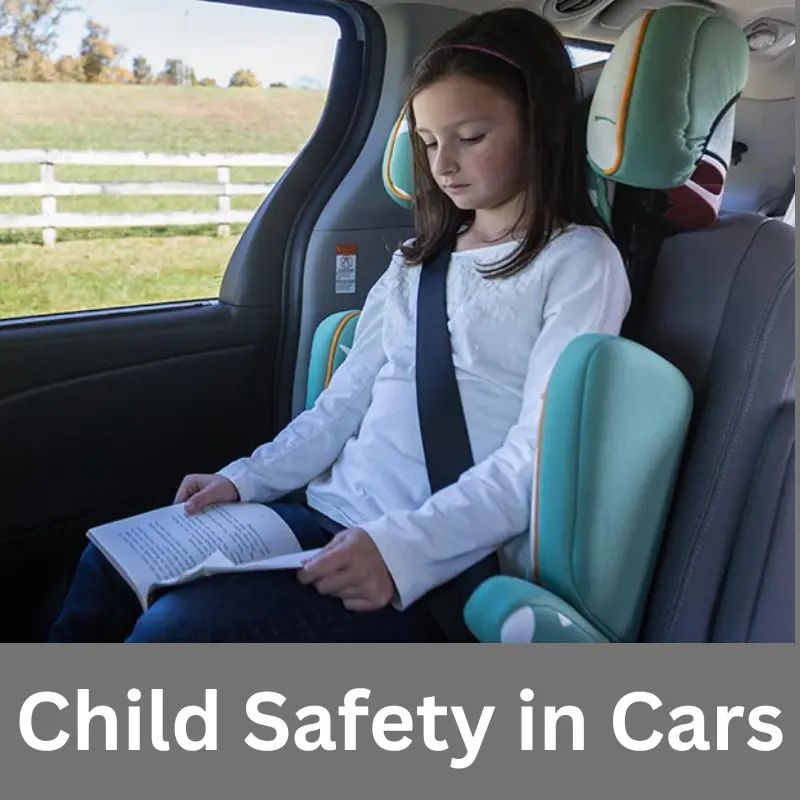Child safety in cars is a paramount concern for drivers, particularly those navigating the roads of Ontario. As you prepare for the G1 test, it’s crucial to understand the intricacies of securing young passengers in your vehicle. This comprehensive guide aims to provide G1 test takers with essential insights into child safety practices, ensuring that you not only pass your test but also become a responsible and safety-conscious driver.
Section 1: The Importance of Child Safety in Cars
1.1. Child Restraint Laws in Ontario:
Before delving into the specifics of child safety, it’s essential to familiarize yourself with Ontario’s child restraint laws. The G1 test assesses your knowledge of these regulations, emphasizing the importance of securing children appropriately based on their age, weight, and height.
1.2. The Role of the Driver:
As a driver, your responsibility extends beyond simply getting from point A to B. You are entrusted with the safety of all passengers, especially children. Demonstrating this understanding is crucial for success in the G1 test.
Section 2: Choosing the Right Child Restraint System
2.1. Infant Car Seats:
For newborns and infants, rear-facing car seats are mandatory. Learn the proper installation techniques, positioning, and when to transition to the next stage of child restraint systems.
2.2. Convertible Car Seats:
Convertible seats adapt to a child’s growth, providing flexibility for various stages. Understanding when and how to transition from rear-facing to forward-facing is a key aspect of child safety.
2.3. Booster Seats:
As children grow, booster seats become essential for proper seat belt fit. G1 test takers should be well-versed in the age, weight, and height requirements for transitioning to booster seats.

Section 3: Installation and Proper Use
3.1. Correct Installation:
Proper installation of child restraint systems is a critical aspect of child safety. The G1 test assesses your ability to install car seats securely, preventing any potential hazards in the event of a collision.
3.2. Harness and Straps:
Understanding how to properly secure a child within their car seat is essential. The G1 test evaluates your knowledge of harness adjustments, chest clip placement, and ensuring a snug fit for optimal safety.
Section 4: General Safety Tips for Child Passengers
4.1. Seat Placement:
Learn about the safest seating positions for children in the car. The G1 test may include questions on the recommended locations for child seats based on the vehicle’s design.
4.2. Airbag Considerations:
Understand the risks associated with placing a rear-facing car seat in the front seat with an active airbag. G1 test takers should be aware of the guidelines for turning off airbags when transporting young passengers.
Section 5: Child Safety Education and Communication
5.1. Educating Passengers:
G1 test evaluators may inquire about your ability to educate passengers, including parents or guardians, on the importance of using appropriate child restraints and following safety guidelines.
5.2. Communication Skills:
Effective communication is a crucial skill for drivers. G1 test questions may assess your ability to explain child safety practices to parents or caregivers, emphasizing your role in promoting responsible driving behavior.
Section 6: Scenarios and Problem-Solving
6.1. Handling Emergency Situations:
The G1 test evaluates your ability to respond to various scenarios. Child safety-related questions may involve assessing your reaction to emergency situations, emphasizing the importance of quick thinking, and prioritizing the well-being of young passengers.
6.2. Troubleshooting Installation Issues:
Demonstrate your problem-solving skills by addressing hypothetical installation challenges. G1 test questions may require you to identify and rectify common mistakes in securing child restraint systems.

Conclusion:
As you prepare for the G1 test, recognizing the significance of child safety in cars is not just a requirement for success; it’s a commitment to responsible driving. This guide equips you with the knowledge and skills needed to ensure the safety of young passengers, showcasing your commitment to becoming a conscientious and informed driver on the roads of Ontario. So, gear up, prioritize child safety, and drive confidently toward success in your G1 test.
